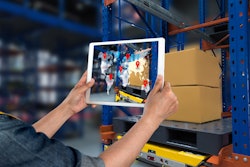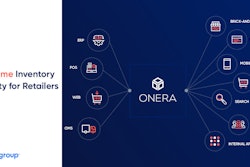
In what might be called the “Great Supply Chain Disruption,” global supply chain shocks are occurring more frequently and have a bigger impact on organizations than ever. This creates a situation where pivoting operations must happen real-time, all the time, prompting organizations to rethink how they invest in new levels of agility to cope with these unprecedented disruptions.
Taking a closer look at the much-needed evolution in supply chain technology toward a continuous ability to adapt, there’s a critical need for digitization solutions that deliver intelligent insights and digital twin capabilities to adjust and optimize enterprise supply chain ecosystems in real time. Adding these capabilities build confidence in decision making and determining when and where the organization flexes in response to often rapidly changing conditions.
Addressing the organizational and technological challenges of supply chain upheaval
Today’s supply chains must be flexible and able to mitigate the impact of operational, environmental, socio-economic, and geopolitical changes at the macro level, while continuously adapting to micro disruptions like truck delays, product damages, inventory shortages and missed flights. Organizations are expected to produce and deliver products regardless of global shortages in parts and labor, transportation options – all while continuing to meet increasing customer demands for faster delivery and personalization.
In the face of these challenges, resilience and the ability to recover quickly are critically important. What’s more, the speed and scale of disruption require that this resilience and adaptability must happen essentially in real-time. Companies must identify risks and vulnerabilities right away, and then adapt plans and supply chain operations to mitigate these issues, and course correct as soon as possible. Ideally, organizations should have enough data-driven visibility and intelligence embedded into their supply chains so that they can even start to anticipate such issues before they occur and take preemptive steps to both pivot and prevent problems from cropping up in the first place.
Unfortunately, such agility is difficult to achieve with static data, especially if that data is fragmented across the organization in disparate data silos. In addition, much of the data now resides outside of the organization, and thus, reliance on partner and vendors is greatly increased. These shortcomings make it hard to plan for the unexpected and to address it adequately and quickly to minimize potential impacts. They obscure any unified or actionable view into supply chain operations and limit an organization’s ability to use predictive insights to make proactive, data-informed decisions in real time. The continuous and timely information flow across internal and external stakeholders is as important as the product flows in a supply chain.
Strengthening supply chains with intelligent digitization and digital twin capabilities
Organizations are increasingly discovering they can overcome these business challenges with intelligent digitization across the end-to-end supply chain. One highly effective way to do this is to deploy digital twin modeling. A digital twin in this context is a virtual representation of the entire supply chain. A capability that can speed the adaptation of operations to business conditions, digital twins are driven by a robust virtual map made up of copious amounts of accessible, real-time data and products flowing across the entire supply chain ecosystem.
Implementing digital twins across the extended network of suppliers, production, transportation and other partners in the extended value chain unlocks the power of data-driven analysis and simulations. As conditions change, sophisticated digital twin implementations can monitor and incorporate ground truth into supply chain operations – from initial sourcing to the last mile delivery – integrating with planning applications and other systems used to manage transactions.
Minute-by-minute adjustments become possible from the digital twin’s continuous realignment of operational models and execution patterns. When excursions or other disruptions surface, the data from these anomalies are analyzed with machine learning and reasoning to support real-time decision-making and even predictive analysis and issues resolution.
Since digital twins can be shared with suppliers and other partners in the ecosystem, continuous realignment, collaboration and communication are possible across every organization and constituent involved, regardless of location. Digital twins can be easily extended across these networks with AI/ML and low-code/no-code scripts that help drive predictive intelligence and automated workflows across the entire supply chain.
Digital twins deliver powerful benefits for the supply chain operations
The benefits of digital twin technology become evident very quickly for organizations that adopt such capabilities. Digital twins allow organizations to better innovate and reduce risk by identifying points of weakness and driving strategic initiatives to reduce cycle time. They can greatly reduce, if not eliminate entirely, the uncertainty that exists in supply chain operations today. Organizations can use digital twins to increase their competitive edge through efficiencies gained from better insight into sourcing, manufacturing, inventory locations and logistics tracking - even at the individual item level.
Increased transparency and customer engagement with smart digital twins can provide assurance that all items in a shipment maintain security, quality and compliance standards throughout the entire chain of custody. Digital twins also help the organization cut production costs by automatically alerting all stakeholders to issues and collaboratively resolving excursions to eliminate waste. And digital twins help control labor costs by using low-code scripts to automate workflows. They can also help in optimal SKU management for revenue and profits, reduce expedited costs in transport, and help build a product centric supply chain.
Throughout, digital twins can enhance key customer satisfaction measures such as on-time and in-full delivery and line-item fill rates, leading to increased revenue. Digital threads can also supply customers with enhanced data for compliance and measurement around Environmental, Social and Governance (ESG) goals and achievements across the entire supply chain. All these benefits help shift supply chain operations from “point in time” to “all the time”, with greater resilience, agility and transparency.
Conclusion
Supply chain disruptions are here for the foreseeable future, and this is prompting more enterprise investment in solutions that can bring more resilience and agility to supply chain operations. As organizations consider their investment options, it’s becoming clear that intelligent digitization and digital twin capabilities are tremendously powerful tools for delivering this resilience and agility. They aid in providing all who leverage them the confidence in decision making, and the ability to quickly adjust to ever present changes with transparency, ensuring uninterrupted customer satisfaction.




















